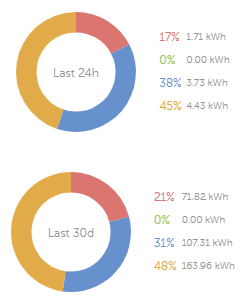Just in from CoCT:
CITY OF CAPE TOWN
2 MARCH 2021
MEDIA RELEASE
Tariff encourages customers to feed excess power into grid
The City of Cape Town welcomes the implementation of the feed-in tariff for all small-scale embedded generation systems (SSEG), for existing and new solar photovoltaic systems (PV). This now also includes a sweetener of 25c per kWh that customers with these power generators are able to receive when they feed their excess power into the electricity grid. The City’s feed-in tariff is one of the highest in the country to encourage the feed in of excess electricity into the City’s grid. The City believes the incentive is vital to boost the uptake of SSEGs and to help Cape Town move increasingly towards renewable energy. Read more below:
The feed-in tariff, including the new additional 25c per kWh incentive will be valid until 30 June 2022.
‘We are moving in the right direction and towards the future the City is aiming to enable: one that has more diversity and security of supply from renewable, cleaner and more affordable energy sources.
‘The feed-in tariff works when customers are net consumers of electricity over a rolling 12-month period. They must therefore consume more electricity from the network than what they put back in over the course of a year. The feed-in tariff offsets their electricity bill and, while they will never receive money from the City, the excess power that is generated back into the City’s grid, will be used to balance out their month’s bill.
‘Importantly, to determine whether a system is grid-tied, meaning if it is connected to the grid and can feed in excess electricity, or whether a system is off-grid, meaning it is electrically completely isolated from the grid, all solar PV systems must be registered. Registration is also a safety and legal requirement and tells the City where a system is connected and confirms the quality of the installation. This reduces the risk of staff and contractors being electrocuted when working on the network,’ said the City’s Mayoral Committee Member for Energy and Climate Change, Councillor Phindile Maxiti.
Feed in tariffs
· Residential SSEG 1 feed in tariff is 73,87c/kWh
· Residential SSEG 2 feed in tariff is 73,24c/kWh
Both of the above excludes the incentive (25c/kWh) and VAT (where applicable).
From 1 July 2021, the feed in tariff will be the same for both tariffs.
Why register all systems, even those that are not connected to the network?
· To understand whether a system is grid-tied or off-grid, all solar PV systems must be registered so that the City can confirm if the system is connected to the grid and so that off-grid systems are not mistaken for unauthorised grid-tied systems.
· Many solar PV systems that claim to be off-grid are not electrically separate from the property’s wiring and are therefore not technically off-grid. To qualify as off-grid, a solar PV system must be completely electrically separate from a property’s wiring; for example, a pool pump that is powered by a solar PV system only.
· Certain other configurations of PV systems can also qualify as off-grid; for example, if a changeover switch is installed so that the property uses only electricity from the PV system, or only from the City’s grid, but never both at the same time.
· Solar Water Heaters (SWHs) that use the sun’s thermal energy to heat water directly are not considered electricity generators and do not need to be registered. Nevertheless, solar PV panels that are directly connected to a hot water geyser element will need to be registered (as do all solar PV panels irrespective of their use) to confirm that the system is an off-grid PV system and is not mistaken for a grid-tied system.
Should a residential SSEG customer not wish to feed excess energy into the grid, they may stay on the Home User or Domestic Tariff provided that a reverse-flow blocking device is installed. The requirement to be a net consumer, consuming more than you export, is in place to meet the ‘own use’ legal requirement, failing which a generation licence is required.
Enforcement of unregistered systems are done in accordance with the City’s Electricity Supply By-Law.
For more information, please visit www.capetown.gov.za/solarPV
End
Issued by: Media Office, City of Cape Town
Media enquiries: Councillor Phindile Maxiti, the City’s Mayoral Committee Member for Energy and Climate Change: Cell: 083 726 9414, Email: Phindile.Maxiti@capetown.gov.za (please always copy media.account@capetown.gov.za)


